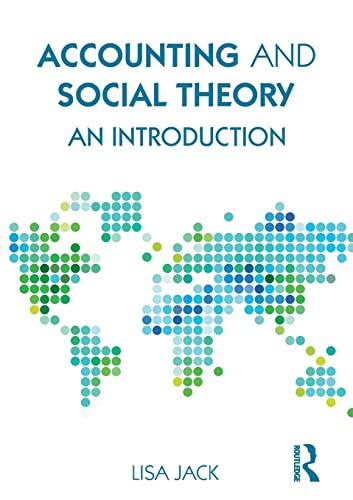Question
(ImpairmentCost Recovery and Rational Entity Models) The information that follows relates to equipment owned by Gaurav Limited at December 31, 2017: Cost $10,000,000 Accumulated depreciation
(ImpairmentCost Recovery and Rational Entity Models)
The information that follows relates to equipment owned by Gaurav Limited at December 31, 2017:
Cost
$10,000,000
Accumulated depreciation to date
2,000,000
Expected future net cash flows (undiscounted)
7,000,000
Expected future net cash flows (discounted, value in use)
6,350,000
Fair value
6,200,000
Costs to sell (costs of disposal)
50,000
Assume that Gaurav will continue to use this asset in the future. As at December 31, 2017, the equipment has a remaining useful life of four years. Gaurav uses the straight-line method of depreciation.
Instructions
(a)Assume that Gaurav is a private company that follows ASPE.
- 1.Prepare the journal entry at December 31, 2017, to record asset impairment, if any.
- 2.Prepare the journal entry to record depreciation expense for 2018.
- 3.The equipment's fair value at December 31, 2018, is $6.5 million. Prepare the journal entry, if any, to record the increase in fair value.
(b)Repeat the requirements in (a) above assuming that Gaurav is a public company that follows IFRS.
(c)Referring to the qualitative characteristics identified in the conceptual framework for financial reporting (discussed in Chapter2), discuss the differences between the cost recovery impairment model and the rational entity impairment model. Which method is preferred?
Step by Step Solution
There are 3 Steps involved in it
Step: 1

Get Instant Access to Expert-Tailored Solutions
See step-by-step solutions with expert insights and AI powered tools for academic success
Step: 2

Step: 3

Ace Your Homework with AI
Get the answers you need in no time with our AI-driven, step-by-step assistance
Get Started


